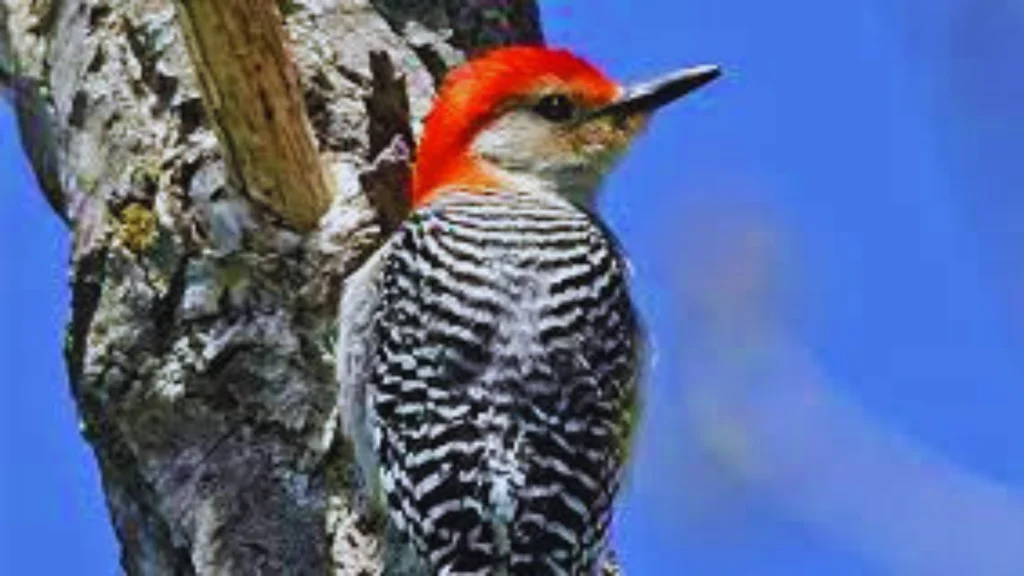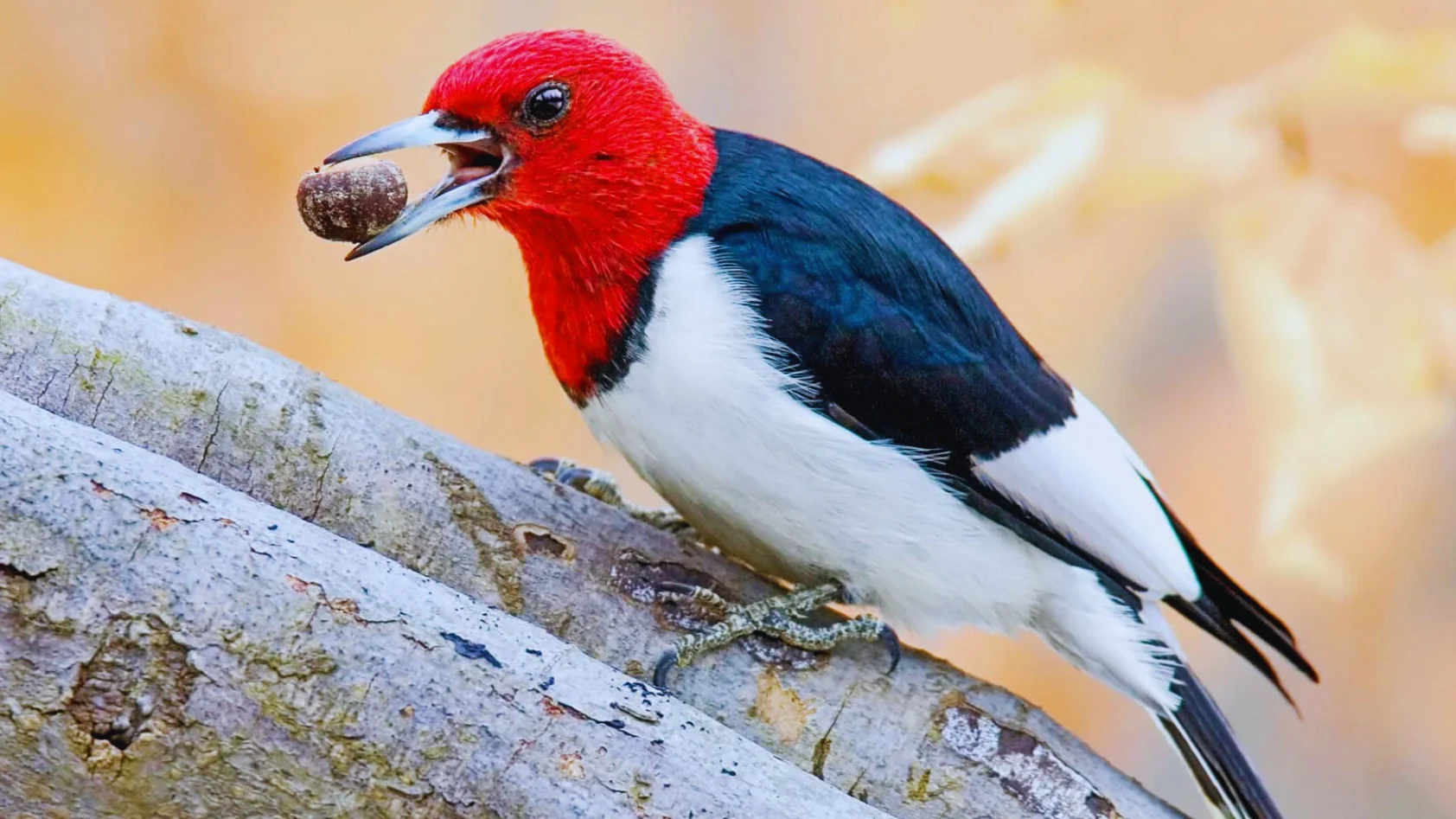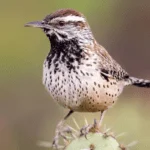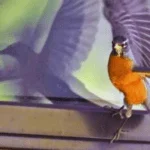If you’re a bird lover, you know how fascinating and extraordinary these creatures can be. Among all the different types of birds, some have distinct and stunning red plumage on their heads. These birds with red heads are not only beautiful but also unique in their own way. In this guide, we will take you on a journey through the most stunning birds with red heads.
Key Takeaways:
- Red-headed birds are remarkable for their distinct and vibrant colors.
- There are several species of red-headed birds found all around the world.
- Red-headed birds have cultural and symbolic significance in different parts of the world.
Red-Headed Birds: An Introduction
Birds with red-colored heads are among the most striking and stunning species in the avian world. Their distinctive plumage is often a result of specialized feathers, pigments, or other adaptations that help them attract mates, camouflages, or communicate with other birds.
Red-headed bird identification can be challenging, especially for those new to birdwatching. However, once you learn to recognize the key features and behaviors of different red-headed bird species, you’ll be able to spot them in the wild with ease.
There are numerous bird species with distinctive red heads, each with its own unique characteristics and traits. From the Northern Cardinal in North America to the Scarlet Macaw in South America, these birds are found on different continents, habitats, and ecosystems.
To get started, it’s essential to familiarize yourself with the various red-headed bird species, their physical features, vocalizations, and habitat preferences. In the next sections, we’ll provide an overview of some of the most remarkable red-headed bird species, their range, conservation status, and interesting facts.
Red-Headed Birds in North America

North America is home to several species of birds with red-colored heads, each with their own unique characteristics and habits.
The northern cardinal (Cardinalis cardinalis) is perhaps the most recognizable, with its bright red crest and contrasting black face mask. Found throughout much of North America, this bird prefers wooded habitats and is often seen at bird feeders, where it enjoys sunflower seeds and other small seeds.
Another striking red-headed bird species found in North America is the red-bellied woodpecker (Melanerpes carolinus). Despite its name, a black cap frequently hides the red on this woodpecker’s head. However, its bright red nape and grayish-white underparts make it easily identifiable. The red-bellied woodpecker is a common resident of deciduous forests and suburban areas, where it feeds on insects and fruit.
The Acorn Woodpecker (Melanerpes formicivorus) is another species found in North America often having a red head. They are known for their characteristic storage of acorns in granaries. Their call and their similar appearance to a certain cartoon character make them a favorite among bird watchers.
Other red-headed birds found in North America include the vermilion flycatcher (Pyrocephalus rubinus), the red-headed duck (Aythya americana), and the pileated woodpecker (Dryocopus pileatus), among others.
Whether you’re an avid birdwatcher or simply appreciate the beauty of nature, be sure to keep an eye out for these stunning bird species on your next outdoor adventure.
Scarlet Macaw: A Vibrant Beauty

The Scarlet Macaw is a stunning bird species that is well known for its vibrant red, yellow, and blue feathers. These parrots can grow up to three feet in length and have a wingspan of up to four feet, making them one of the largest parrot species in the world. They are primarily found in the forests of South America, Central America, and Mexico. The Scarlet Macaw is known for its loud and raucous calls, which it uses to communicate with other members of its flock.
The Scarlet Macaw is also known for its intelligence and its ability to mimic human speech. These traits have made them popular as pets, although they are protected under international law and are illegal to capture and trade without a permit. In the wild, Scarlet Macaws live in pairs or small groups, and they use their powerful beaks to crack open nuts and seeds. They also eat fruits and insects, and they are an important part of the forest ecosystem.
| Appearance | The Scarlet Macaw has a bright red head and upper body, with a yellow and blue lower body. Its wings are blue and yellow, and its tail feathers are mostly blue with splashes of red and yellow at the tips. |
|---|---|
| Habitat | Scarlet Macaws live in tropical forests, ranging from southern Mexico to the Amazon basin in South America. They require large trees for nesting and roosting, and they are most commonly found in forested areas near rivers and streams. |
| Behavior | Scarlet Macaws are highly social birds and are often seen in pairs or small groups. They communicate with each other through loud calls and body language. They are also known for their intelligence and their ability to use tools. In the wild, Scarlet Macaws mate for life and form strong bonds with their partners. |
| Conservation | The Scarlet Macaw is listed as a species of Least Concern by the IUCN, although it is protected under international law through CITES. Habitat loss and the pet trade are the main threats to this species, and conservation efforts are underway to protect their habitat and prevent illegal capture and trade. |
Did you know? The Scarlet Macaw’s bright red feathers are actually a result of the pigments in the food they eat, which include fruits and nuts high in carotenoids.
Northern Cardinal: A Symbol of Beauty

The Northern Cardinal is a well-known red-headed bird species in North America and is perhaps one of the most recognizable birds due to its striking appearance. The male Northern Cardinal has a bright red crest and face, while its wings and tail are a deep shade of brown. Females also have a distinctive crest, but their feathers are a subdued brown and red coloration.
Northern Cardinals prefer habitats with dense shrubs and trees, found commonly in residential areas, parks, and woodlands. They are also known for their melodious songs, often heard during the breeding season. Interestingly, both males and females sing, with the female’s song being more complex and varied.
This red-headed bird species is well adapted to living near humans and can often be seen at bird feeders and bird baths in suburban areas. Northern Cardinals are known to be monogamous and will mate with the same partner for multiple breeding seasons.
Overall, the Northern Cardinal is a beloved red-headed bird species, with its stunning appearance and beautiful songs making it a favorite among birdwatchers and nature enthusiasts alike.
Red-Bellied Woodpecker: A Master of Percussion

The Red-Bellied Woodpecker is a striking bird with a red head that is found in forests, woodlands, and suburban areas across the eastern United States. This bird is known for its rhythmic drumming on trees, which it does both to establish territory and to locate insects.
The Red-Bellied Woodpecker is about 9 inches long and has a wingspan of about 15 inches. Its head is red, but the rest of its body is a mix of black and white, with a patch of red on its lower belly. The male and female have similar coloring, but the male has a red patch on the nape of its neck.
These woodpeckers have adapted to nesting in dead trees, which they excavate with their powerful bills. They also feed on insects that they find in the bark of trees, as well as on nuts and seeds. They store food in the crevices of trees and under loose bark for later use.
One interesting behavior of the Red-Bellied Woodpecker is its habit of “anting.” These birds will pick up ants and rub them on their feathers, which may help to control parasites or to spread formic acid, a chemical that can repel insects.
The Red-Bellied Woodpecker has a distinctive call, which can be described as a “churr-churr-churr.” It also has a rapid drumming pattern that can be heard from a distance. These sounds make it easy to identify this woodpecker in the field.
If you want to attract Red-Bellied Woodpeckers to your backyard, you can set up a suet feeder or provide a dead tree or log for them to forage on. They may also visit bird baths for a drink or a quick dip.
Fun Fact:
The Red-Bellied Woodpecker got its name because of the faint reddish hue on its belly, which is often difficult to see in the field.
Red-Headed Tanager: Exquisite and Rare

If you’re looking for a stunning red-headed bird species, the Red-Headed Tanager should be on your list. Found in South America, this tanager sports a bright red head that contrasts beautifully with its black and yellow body. The males are even more striking, with a vibrant red extending down their necks and onto their backs.
Although it may be difficult to spot this elusive bird, the Red-Headed Tanager prefers to live in the canopy of humid forests, making it more accessible to birdwatchers with patience and a good pair of binoculars. They are known to be quite vocal, and their high-pitched calls can help identify their location.
The Red-Headed Tanager is also known for its unique courtship display. During breeding season, the male will hop up and down on a branch, spreading his wings and displaying his bright red plumage to attract a mate.
Unfortunately, habitat loss due to deforestation and agriculture is a major threat to this exquisite bird species. However, conservation efforts are underway to protect and restore the forests where they live.
Flame Robin: A Scarlet Jewel Down Under
The Flame Robin is a small passerine bird native to southeastern Australia. This striking bird is named for its brilliant red-orange breast and belly, which contrast sharply with its slate-gray back and wings. Males also sport a distinctive white patch on their forehead, making them easy to identify in the field.
Flame Robins typically breed in the cooler months, from May to August, and are monogamous. They construct cup-shaped nests in tree hollows or crevices, and females lay 2-4 eggs per clutch. During the non-breeding season, from September to April, they migrate to the southeast coast of Australia.
These birds are highly territorial and aggressively defend their feeding and breeding territories. They feed primarily on insects, which they hunt from perches or on the ground. Flame Robins are commonly found in open woodland, forest edges, and scrubland, and are often seen fluttering their wings while they forage for food.
Unfortunately, the population of Flame Robins has been in decline due to habitat loss and degradation. Conservation efforts have been initiated to protect their remaining habitats and increase awareness about the importance of preserving these birds and their ecosystems.
Unique Red-Headed Birds around the World
Red-headed birds can be found all across the world, and each species possesses unique characteristics. Here are some of the most remarkable red-headed bird species from different parts of the globe:
| Bird Species | Description | Habitat and Range |
|---|---|---|
| American Redstart | The American Redstart is a small migratory warbler with a bright orange-red and black plumage. Males have a brighter red head than females. | North and Central America, migrating to South America |
| Crimson Rosella | The Crimson Rosella is a stunning parrot species with a red head, neck, and breast. Their feathers are also adorned with blue, green, and yellow patches. | Australia, inhabiting woodlands and forests |
| Flame-colored Tanager | The Flame-colored Tanager is a striking red-headed bird with a bright orange-red plumage. Males are more vibrant than females. | South and Central America, residing in wooded areas and forest edges |
| Golden Pheasant | The Golden Pheasant is a dazzling bird with a vibrant red crest, face, and underparts. Their upperparts are golden-yellow and adorned with blue and green markings. | China, inhabiting dense forests and mountainous regions |
| Lady Amherst’s Pheasant | Lady Amherst’s Pheasant is a beautiful bird with a red head, blue throat, and a distinctive white and black collar. Males have longer tails than females. | China and Myanmar, living in forests and grassy areas |
| Red-faced Cormorant | The Red-faced Cormorant is a marine bird with a red face and throat, black plumage, and a yellow bill. They are highly adapted to oceanic environments. | North Pacific Ocean, nesting on rocky coasts and islands |
These are just a few examples of the numerous red-headed bird species inhabiting diverse habitats across the world. With their striking colors and unique behaviors, red-headed birds continue to fascinate birdwatchers and nature enthusiasts alike.
Attracting Red-Headed Birds to Your Backyard
Do you want to attract birds with red plumage on their heads to your backyard? With a few simple tips and tricks, you can make your garden a favorite spot for these stunning avian species.
First, consider providing a variety of feeders that cater to different birds’ dietary needs. Some red-headed bird species, like the Northern Cardinal, enjoy seeds and nuts, while others, like the Red-Bellied Woodpecker, prefer suet or insects.
Second, create a welcoming habitat by planting native trees and shrubs that offer food, shelter, and nesting sites for these birds. Red-Headed Tanagers, for example, are attracted to fruit trees and dense foliage.
Third, offer fresh water sources, such as a bird bath or fountain, to attract thirsty birds. Be sure to clean and refill these sources regularly.
Fourth, consider installing birdhouses or nest boxes designed for specific red-headed bird species. This provides nesting sites for birds that prefer to live in cavities, such as the Scarlet Macaw and Flame Robin.
By following these simple steps, you can attract an array of beautiful red-headed birds to your backyard and enjoy their stunning colors and unique behaviors up close.
Birdwatching Tips for Red-Headed Bird Species
When birdwatching for red-headed birds, it’s important to pay attention to their unique features, calls, and habitat preferences. Here are some tips to help you identify and observe these stunning avian species:
- Look for birds with red plumage on their heads, which can vary in shade from bright scarlet to deep maroon.
- Listen for their calls, which can range from a sharp, piercing whistle to a melodic song.
- Check their habitat preferences, which can include forests, grasslands, wetlands, and urban areas.
- Pay attention to their behavior, such as feeding patterns, courtship displays, and nesting habits.
- Use binoculars or a spotting scope to get a closer look at these birds without disturbing them.
- Consider joining a birdwatching group or taking a guided tour to learn more about red-headed birds and other avian species.
By following these tips, you’ll be able to appreciate the unique beauty and diversity of red-headed birds in the wild.
Conservation and Challenges for Red-Headed Birds
Despite their striking beauty, red-headed birds face numerous conservation challenges. Habitat loss, climate change, hunting, and poaching are some of the main threats to these birds and their ecosystems.
Many red-headed bird species rely on old-growth forests, wetlands, and other specialized habitats that are disappearing due to human activities such as logging, agriculture, and urbanization. As a result, these birds are losing their homes and food sources, and are often forced to migrate or adapt to suboptimal conditions.
Climate change is also affecting red-headed birds, as it alters their breeding and feeding cycles, ranges, and interactions with other species. For instance, some red-headed bird species are experiencing earlier breeding times, which coincide with the peak of insect abundance and the emergence of young birds. However, climate change may cause a mismatch between these events, leading to reduced survival and reproduction rates for these birds.
Hunting and poaching are additional threats to some red-headed bird species, especially those prized for their feathers, meat, or ornamental value. In some countries, red-headed birds are illegally trapped or killed for use in traditional or commercial markets, putting their populations at risk.
To address these challenges, conservationists and researchers are working together to monitor and protect red-headed bird species and their habitats. These efforts include habitat restoration, captive breeding, public education, and policy advocacy. For instance, organizations such as the Audubon Society, BirdLife International, and the Cornell Lab of Ornithology are promoting conservation and research projects aimed at understanding and conserving red-headed bird species worldwide.
As a bird lover, you can also contribute to the conservation of red-headed birds by supporting these organizations, engaging in birdwatching and ecological tourism, and adopting bird-friendly practices in your daily life. By working together, we can ensure that red-headed birds continue to brighten our skies and enrich our lives for generations to come.
Red-Headed Birds in Folklore and Mythology
Birds with red-colored heads have captured the imagination of humans for centuries, featuring prominently in folklore, mythology, and symbolism. Across cultures and time periods, these birds have been associated with a variety of myths, legends, and beliefs.
In Christianity, the red-headed Northern Cardinal is considered a symbol of faith and loyalty. The bird’s red plumage is believed to represent the blood of Christ and the sacrifices made by early Christian martyrs. In Native American cultures, the Scarlet Macaw is considered a sacred bird, with its feathers used in spiritual ceremonies and as adornments for headdresses. The Red-Headed Tanager, found in South America, is believed to bring good luck in love and relationships, according to Brazilian folklore.
Red-headed birds have also been the subject of superstitions and folk beliefs. Some cultures believe that seeing a bird with a red head is a sign of danger or impending death, while others consider them to be messengers of good news and prosperity. In ancient Greek mythology, the Red-Crested Turaco was associated with Aphrodite, the goddess of love and beauty, and was believed to bring prosperity and joy to those who saw it.
Despite their prominence in mythology and folklore, red-headed birds face numerous threats in the modern world, including habitat loss, climate change, and hunting. As these species continue to face challenges, it’s important to appreciate their beauty and significance in our cultural history.
Capturing the Beauty of Red-Headed Birds: Photography Tips
Red-headed birds are known for their vibrant and striking colors, making them popular subjects for photography enthusiasts. If you’re interested in capturing the beauty of these avian species, here are some photography tips to help you get started.
Equipment Recommendations
To get the best shots of red-headed birds, it’s recommended that you invest in a quality camera with a fast shutter speed and long zoom lens. A tripod can also be helpful in ensuring stability and minimizing camera shake.
Composition Ideas
When photographing red-headed birds, it can be effective to frame the shot in such a way that the bird’s vibrant colors are highlighted against a contrasting background. Additionally, consider the rule of thirds, placing the bird in the left or right third of the frame.
Best Practices for Photographing Red-Headed Birds
To maximize your chances of capturing great shots of red-headed birds, it’s important to be patient and observe the bird’s behavior. Try to anticipate their movements and be ready to capture the decisive moment. Additionally, shooting during the golden hour, which is the hour after sunrise and the hour before sunset, can provide optimal lighting conditions for capturing vivid colors.
Editing Techniques
Once you’ve captured your shots, there are several editing techniques you can use to enhance the colors and clarity of the images. Adjusting the contrast, saturation, and sharpness settings can help bring out the vibrancy of the bird’s red plumage.
By following these photography tips, you’ll be well on your way to capturing stunning images of red-headed birds that showcase their unique and striking beauty.
Conclusion
After exploring the fascinating world of birds with red heads, you have gained an appreciation for their unique and vibrant beauty. From the Scarlet Macaw to the Red-Headed Tanager, these avian species showcase a stunning range of colors and behaviors.
By attracting red-headed birds to your backyard with appropriate feeders and food, you can witness their beauty up close. While birdwatching, pay attention to specific visual cues and calls to identify different red-headed bird species.
Unfortunately, red-headed birds also face various conservation challenges, including habitat loss and climate change. However, dedicated conservation initiatives are working to protect these birds and their ecosystems.
Throughout history, red-headed birds have also held cultural significance in folklore, mythology, and symbolism, further emphasizing their importance and beauty.
Appreciating Red-Headed Birds
Whether you’re a birdwatching enthusiast or simply someone who enjoys nature, take the time to appreciate the diversity and splendor of birds with red heads. By understanding and protecting these unique creatures, we can ensure their beauty remains a part of our world for generations to come.
Birds With Red Head: FAQs
Q: What is the purpose of this guide?
A: The purpose of this guide is to provide information about different species of birds with red heads and highlight their unique and vibrant colors.
Q: What are some examples of red-headed bird species?
A: Some examples of red-headed bird species include the Scarlet Macaw, Northern Cardinal, Red-Bellied Woodpecker, Red-Headed Tanager, and Flame Robin.
Q: Where are red-headed bird species found?
A: Red-headed bird species can be found in various regions around the world, including North America, South America, and Australia.
Q: How can I attract red-headed birds to my backyard?
A: To attract red-headed birds to your backyard, you can provide suitable bird feeders, birdhouses, and specific food preferences for different red-headed bird species.
Q: What are some birdwatching tips for identifying red-headed bird species?
A: When birdwatching, you can identify red-headed bird species by observing visual cues, listening to their calls, and paying attention to their habitat preferences.
Q: What are the conservation challenges facing red-headed bird species?
A: Red-headed bird species face conservation challenges such as habitat loss and climate change. However, there are also conservation initiatives aimed at protecting these birds and their ecosystems.
Q: What is the cultural significance of red-headed birds?
A: Red-headed birds have cultural significance in folklore, mythology, and symbolism. They are often associated with beliefs and stories across different cultures and time periods.
Q: How can I capture the beauty of red-headed birds through photography?
A: To capture the beauty of red-headed birds in photography, you can use recommended equipment, apply composition ideas, and follow best practices for photographing these stunning avian subjects.













